References:
[1] Ravallion,
M., and G. Datt, G. (1996a). How Important to India’s Poor is the Sectoral Composition
of Economic Growth? World Bank Economic Review 10(1):1–25.
[2] Tendulkar,
S. D. (1998). Indian Economic Policy Reforms and Poverty: An Assessment. In I.
J.
[3] Dollar,
D. and A. Kraay (2002), “Growth is Good for the Poor”, Journal of Economic Growth,
Vol. 7, No. 3, 195-225.
[4] Datt, G.,
and Ravallion, M. (2002). Is India’s Economic Growth Living the Poor Behind? World
Bank, Washington, DC. Mimeo.
[5] Bhagwati,
J. (2001). Growth, Poverty and Reforms. Economic and Political Weekly. 11 March.
[6] World Bank
(2000). Source book on Poverty, Environment, and Natural Resources. World Bank,
Environment Department, Washington, D.C.
[7] Berhane,
G., & Gardebroek, C. (2011). Does Microfinance Reduce Rural Poverty? Evidence-Based
on Household Panel Data from Northern Ethiopia. American Journal of Agricultural
Economics, 93(1), 43-55. https://doi.org/10.1093/ajae/aaq126.
[8] Imai, K.
S., & Azam, M. S. (2012). Does Microfinance Reduce Poverty in Bangladesh? New
Evidence from Household Panel Data. The Journal of Development Studies, 48(5),
633-653. https://doi.org/10.1080/00220388.2012.661853.
[9] Khan, A.
D., Ahmad, E., and Jan, W. (2012). Financial Development and Poverty Alleviation:
Time Series Evidence from Pakistan. World Applied Sciences Journal, 18 (11), 1576-1581.
https://doi.org/10.5829/idosi.wasj.2012.18.11.126.
[10] Collins,
D., Morduch, J., Rutherford, S., & Ruthven, O. (2009). Portfolios of the Poor:
How the World’s Poor Live on $2 a Day. New Jersey: Princeton University Press.
[11] Agrawal,
P. (2008). Economic Growth and Poverty Reduction: Evidence from Kazakhstan. Asian
Development Review, vol. 24, no. 2, pp. 90-115, Asian Development Bank
[12] Dreze, J.,
and Sen, A. (1995). India: Economic Development and Social Opportunity. New Delhi:
Oxford University Press.
[13] Aghion,
P., Caroli, E., and Garcia-Penalosa, C. (1999). Inequality and Economic Growth:
The Perspective of the New Growth Theories. CEPREMAP Discussion Paper No. 9908,
Paris.
[14] Sen, A.
(1996). Consumption Externalities and the Financing of Social Services: Comment.
In V. Fuchs, ed., Individual and Social Responsibility: Child Care, Education, Medical
Care, and Long-term Care in America. National Bureau of Economic Research Conference
Report Series. Chicago and London: University of Chicago Press.
[15] Filmer,
D., & Pritchett, L. (1998). The effect of household wealth on educational attainment.
Demographic and Health Survey. The World Bank
[16] Sahn, D.
E., & Stifel, D. (2003). Exploring Alternative Measures of Welfare in the Absence
of Expenditure Data. The review of income and wealth https://doi.org/10.1111/j.0034-6586.2003.00100.x.
[17] Government
of Ghana (GoG/NDPC, 2013). Medium-Term National Development Policy Framework: Ghana
Shared Growth Development Agenda (GSGDA), 2010-2013 –Vol., Accra: NDPC.
[18] Ghana Statistical
Service (GSS) (2018). Ghana Living Standard Survey Round 7: Poverty Profile (2005
– 2017). Accra.
[19] Lin, B.
Q. (2003). Economic growth, income inequality, and poverty reduction in People’s
Republic of China. Asian Development Review, 20(2, 105–124.
[20] Fosu, A.
K. (2017). Growth, inequality, and poverty reduction in developing countries: Recent
global evidence. Research in Economics, 71(2), 306–336.
[21] Ruch, W.
A. (2018). Public Capital Investment, Economic Growth and Poverty. Regional Science
Policy & Practice.
[22] Asitik,J.,
A. (2016). Entrepreneurship: A means to poverty reduction in rural northern Ghana?
Doctoral thesis, University of Central Lancashire.
[23] Stiglitz,
J., (2015). The great divide. Penguin, UK.
[24] Nurkse,
R. (1953). Problems of Capital Formation in Underdeveloped Countries. New York:
Oxford University Press.
[25] Azariadis,
C., & Stachurski, J. (2006). “Poverty Traps” in handbook of growth economic
(in Philippe Aghion and Steven Durlaf Eds.). North Holland.
[26] Solow, R.
M. (1956). A contribution to the theory of economic growth. Quarterly Journal of
Economics, 70(1), 65– 94. https://doi.org/10.2307/1884513.
[27] Swan, T.
W. (1956). Economic growth and capital accumulation. Economic Record, 32(2), 334–
361. https://doi.org/10.1111/j.1475-4932.1956.tb00434.x.
[28] Thomas,
A. (2000). Meaning and views of development. In T. Allen, & A. Thomas (Eds.),
Poverty and Development into the 21st Century (pp. 23-48). Oxford: Oxford University
Press.
[29] Oxfam (2001).
Gender, Development and Humanitarian Work.
[30] Bello, M.
A., Sagagi, M. S. (2020). Governance, Growth and Poverty Reduction in Nigeria: Learning
from Global Experiences.
[31] United Nations
Development Programme (1995). Human Development Report 1995. New York: Oxford University
Press.
[32]Telfer, D.J. (2015).
The evolution of development theory and tourism. In R. Sharpley & D. J. Telfer
(Eds.), Tourism and Development Concepts and Issues (pp. 31- 73). Bristol: Channel
View Publications.
[33] Barbier,
E. B. (1987). The concept of sustainable economic development. Environmental Conservation,
14(2), 101-110.
[34] Seers, D.
(1969). The meaning of development. Revista Brasileira de Economía, 24(3), 29-50.
[35] United Nations
Development Programme (2010). Human Development Report 2010, New York: Oxford
University Press.
[36] Saptura,
H. P., Susilo, R., & Sakti, K. (2019). The Nexus of Economic Growth and Poverty
Reduction in East Java. Advances in Economics, Business and Management Research,
volume 144, 23rd Asian Forum of Business Education (AFBE 2019)].
[37] Keynes,
J. M. (1936). The General Theory of Employment, Interest and Money, London: Macmillan
& Co Ltd.
[38] Adams, R.
H. (2004). Economic Growth, Inequality and Poverty: Estimating the Growth Elasticity
of Poverty. World Development, 32(12):1989–2014.
[39] Acharya,
S., & Nuriev, S. (2016). Role of Public Investment in Growth and Poverty Reduction
inTransition Economies. Journal of Reviews on Global Economics; Volume 5,
310-326.
[40] Sasmal,
R. S. (2016). Public Expenditure, Economic Growth and Poverty Alleviation. International
Journal of Social Economic, 604-618.
[41] Fan, S.,
Zhang, L., & Zhang, X. (2003). Growth, Inequality, and Poverty in Rural China:
The Role of Public Investments. Research Report 125, International Research Institute,
Food Policy.
[42] Ravallion,
M. (2004) ‘Pro-Poor Growth: A Primer’, Washington, DC: World Bank, Development Research
Group.
[43] Ravallion,
M., and Chen, S. (1997). What Can New Survey Data Tell Us about Recent Changes in
Distribution and Poverty? The World Bank Economic Review, Volume 11, Issue 2, May
1997, Pages 357–382, https://doi.org/10.1093/wber/11.2.357.
[44] Odhiambo,
N.M., (2014). Financial systems and economic growth in South Africa: a dynamic complementarity
test. International Review of Applied Economics, 28(1), pp.83-101.
[45] World Bank
(2020). Ghana Poverty Assessment. World Bank, Washington, DC. © World Bank. https://openknowledge.worldbank.org/handle/10986/34804
License: CC BY 3.0 IGO.
[46] Ravallion,
M. (1994) Poverty Comparisons, Chur: Harwood Academic Publishers.
[47] Alkire,
S. (2007). Choosing Dimensions: The Capability Approach and Multidimensional Poverty
Chronic Poverty Research Centre Working Paper No. 88. Oxford Poverty & Human
Development Initiative.
[48] Alkire,
S. and Foster, J. (2011). Counting and multidimensional poverty measurement.
[49] Alkire,
S., Kanagaratnam, U., and Suppa, N. (2021). ‘The global Multidimensional Poverty
Index (MPI) 2021’, OPHI MPI Methodological Note 51, Oxford Poverty and Human Development
Initiative, University of Oxford.
[50] Lim, S.S.,
Allen, K., Bhutta, Z.A., Dandona, L., Forouzanfar, M.H., Fullman, N., Murray, C.
J.L., (2016). Measuring the health-related sustainable development goals in 188
countries: a baseline analysis from the global burden of disease study 2015. Lancet
388 (10053), 1813–1850.
[51] UNDP (2022).
Multidimensional Poverty Index 2022 Unpacking deprivation bundles to reduce multidimensional
poverty. Briefing note for countries on the 2022 Multidimensional Poverty Index.
https://hdr.undp.org/content/2022-global-multidimensional-poverty-index-mpi.
[52] UNICEF,
WHO, (2019). Progress on Household Drinking Water, Sanitation and Hygiene 2000-2017.
Special Focus Oninequalities (New York).
[53] UNDP, OPHI,
(2020). Global MPI 2020 — Charting Pathways Out of Multidimensional Poverty: Achieving
the SDGs. UNDP.
[54] Adegboyo,
O. S. (2020). Does government spending reduce poverty in Nigeria? Evidence from
auto-regressive distributed lag specification. Management and Business Economics
Journal. EKONOMI BISNIS, Vol. 25. N0. 1.
[55] Nyarko,
J. B. (2016). Modelling Government Expenditure-Poverty Nexus for Ghana. Munich Personal
RePEc Archive.
[56] Nazar, D.,
& Tabar, M. H. (2013), “Government Expenditures and its Impact on Poverty Reduction
(Empirical from Sistan and Baluchestan Province of Iran)”. International Journal
of Academic Research in Economics and Management Science, 2(1), 251-260.
[57] Chani, I.
M., Pervaiz, Z., Jan, A. S., Ali, A. (2011). Poverty, Inflation and Economic Growth:
Empirical Evidence from Pakistan. World Applied Sciences Journal 14:1058
- 1063
[58] Osterling,
K. (2007). Social Capital and Neighbourhood Poverty: Toward an Ecologically Grounded
Model of Neighbourhood Effects, Journal of Social Behaviour in the Social Environment,
16(1-2).
[59] Khan, M.
S. & Senhadji A. S. (2001). Threshold Effects in the Relationship between Inflation
and Growth. IMF Staff Papers, 48(1), 1-21.
[60] Talukdar,
S. R. (2012). The Effect of Inflation on Poverty in Developing Countries: A Panel
Data Analysis (Doctoral Dissertation, Texas Tech University).
[61] UN (2010).
Rethinking Poverty: Report on the World Social Situation. Department of Economic.
United Nations Publications. (9).
[62] Ahmed, S.
& Mortaza, G. (2011). Inflation and Economic Growth in Bangladesh: 1981-2005.
Research Department, Bank of Bangladesh. https://siteresources.worldbank.org/PSGLP/Resources/wp0604.pdf
Journal of Public Economics, 2011, vol. 95, issue 7-8, 476-487.
[63] Quartey,
P. (2010). Price Stability and the Growth Maximizing Rate of Inflation for Ghana,
Modern Economy, 1(03), 180-194.
[64] Adelowokan,
O. A., Maku, O. E., Babasanya, A. O., Adesoye, A. B. (2019). Unemployment, poverty
and economic growth in Nigeria. Journal of
Economics and Management, ISSN 1732-1948 Vol. 35 (1).
[65] Ghana Statistical
Service (2017). Ghana Living Standards Survey.
[66] Ismaila,
M., & Imoughele, L. E. (2015). Macroeconomic determinants of economic growth
in Nigeria: A co-integration approach. International Journal of Academic
Research in Economics and Management Sciences, 4(1), 34-46.
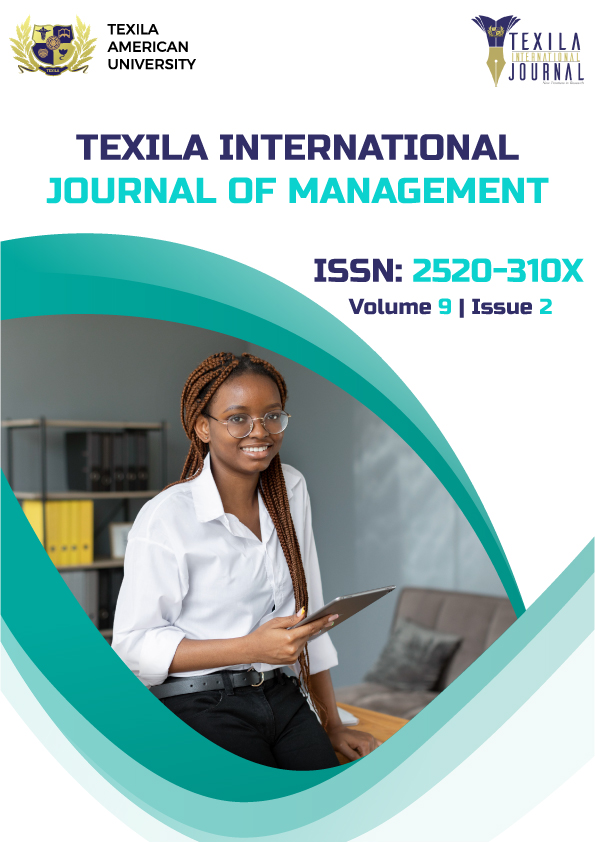
 The Correlation between Continuous Professional Development and Career Prospects of Technical University Lecturers in GhanaAuthor: William Owusu-BoatengDOI: 10.21522/TIJMG.2015.09.02.Art001
The Correlation between Continuous Professional Development and Career Prospects of Technical University Lecturers in GhanaAuthor: William Owusu-BoatengDOI: 10.21522/TIJMG.2015.09.02.Art001 Corporate Social Responsibility and Competitive Edge. Lesson from MTN UgandaAuthor: Gracious Kazaara AriyoDOI: 10.21522/TIJMG.2015.09.02.Art002
Corporate Social Responsibility and Competitive Edge. Lesson from MTN UgandaAuthor: Gracious Kazaara AriyoDOI: 10.21522/TIJMG.2015.09.02.Art002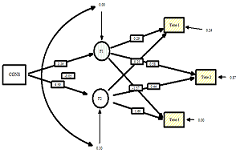 A Longitudinal Survey of Job Satisfaction among Pharmaceutical Executives: An Unconditional Latent Growth Curve StudyAuthor: Theophilus Ehidiamen OamenDOI: 10.21522/TIJMG.2015.09.02.Art003
A Longitudinal Survey of Job Satisfaction among Pharmaceutical Executives: An Unconditional Latent Growth Curve StudyAuthor: Theophilus Ehidiamen OamenDOI: 10.21522/TIJMG.2015.09.02.Art003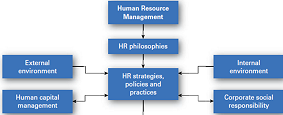 Strategic Human Resource Management (SHRM) Concepts and Models for Virtual Organization Management: A Literature ReviewAuthor: Grace Eleojo AbalakaDOI: 10.21522/TIJMG.2015.09.02.Art004
Strategic Human Resource Management (SHRM) Concepts and Models for Virtual Organization Management: A Literature ReviewAuthor: Grace Eleojo AbalakaDOI: 10.21522/TIJMG.2015.09.02.Art004 Factors Influencing the Continuous Usage of Mobile Banking Services in Butembo, Democratic Republic of CongoAuthor: Rodrigue KalumendoDOI: 10.21522/TIJMG.2015.09.02.Art005
Factors Influencing the Continuous Usage of Mobile Banking Services in Butembo, Democratic Republic of CongoAuthor: Rodrigue KalumendoDOI: 10.21522/TIJMG.2015.09.02.Art005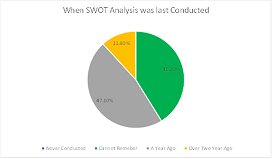 The Importance of Business Environmental Analysis: A Case Study of Zambian BreweriesAuthor: Jubert TwamboDOI: 10.21522/TIJMG.2015.09.02.Art006
The Importance of Business Environmental Analysis: A Case Study of Zambian BreweriesAuthor: Jubert TwamboDOI: 10.21522/TIJMG.2015.09.02.Art006 Impact of Economic Growth on Poverty Reduction: Evidence from GhanaAuthor: Ofori Frimpong HennehDOI: 10.21522/TIJMG.2015.09.02.Art007
Impact of Economic Growth on Poverty Reduction: Evidence from GhanaAuthor: Ofori Frimpong HennehDOI: 10.21522/TIJMG.2015.09.02.Art007 Corporate Governance and Corporate Social Responsibility: Good Practices and ProspectsAuthor: Gracious Kazaara AriyoDOI: 10.21522/TIJMG.2015.09.02.Art008
Corporate Governance and Corporate Social Responsibility: Good Practices and ProspectsAuthor: Gracious Kazaara AriyoDOI: 10.21522/TIJMG.2015.09.02.Art008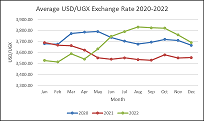 Exchange Rate Fluctuation and Management of Foreign Donor-Funded Program BudgetAuthor: Yanga Elias LaguDOI: 10.21522/TIJMG.2015.09.02.Art009
Exchange Rate Fluctuation and Management of Foreign Donor-Funded Program BudgetAuthor: Yanga Elias LaguDOI: 10.21522/TIJMG.2015.09.02.Art009
